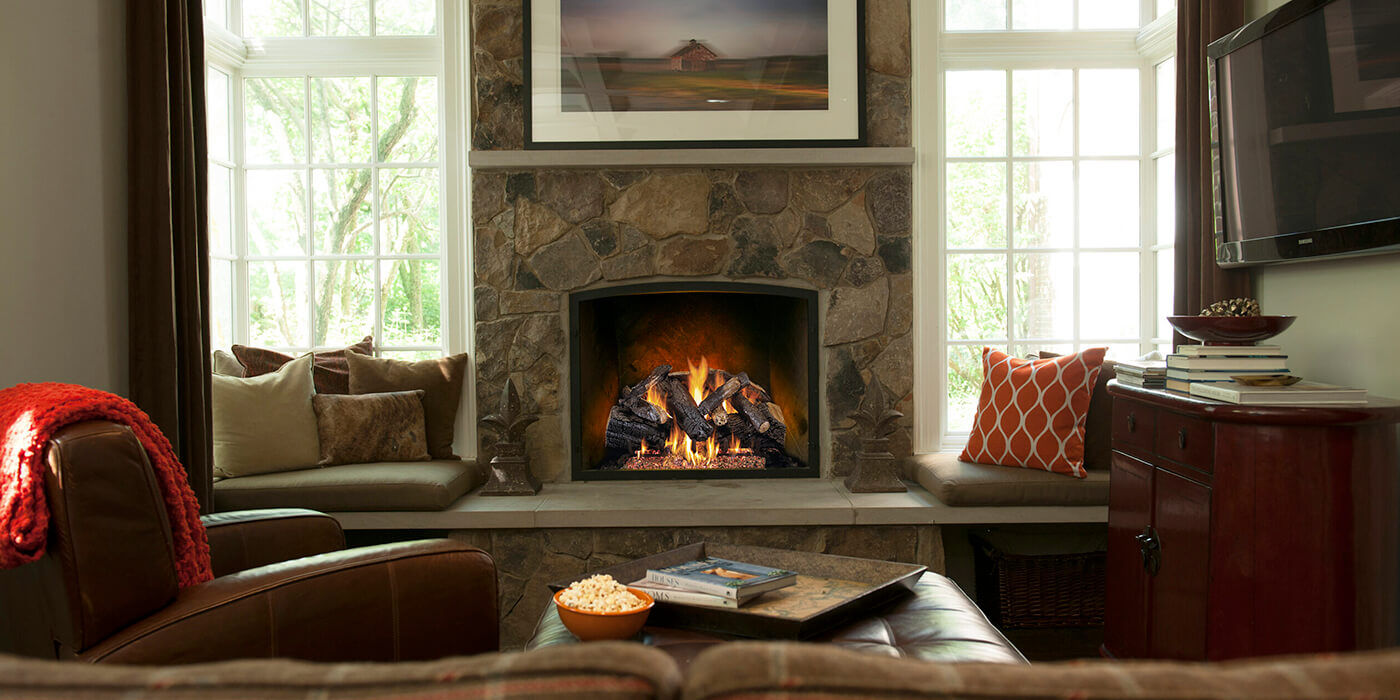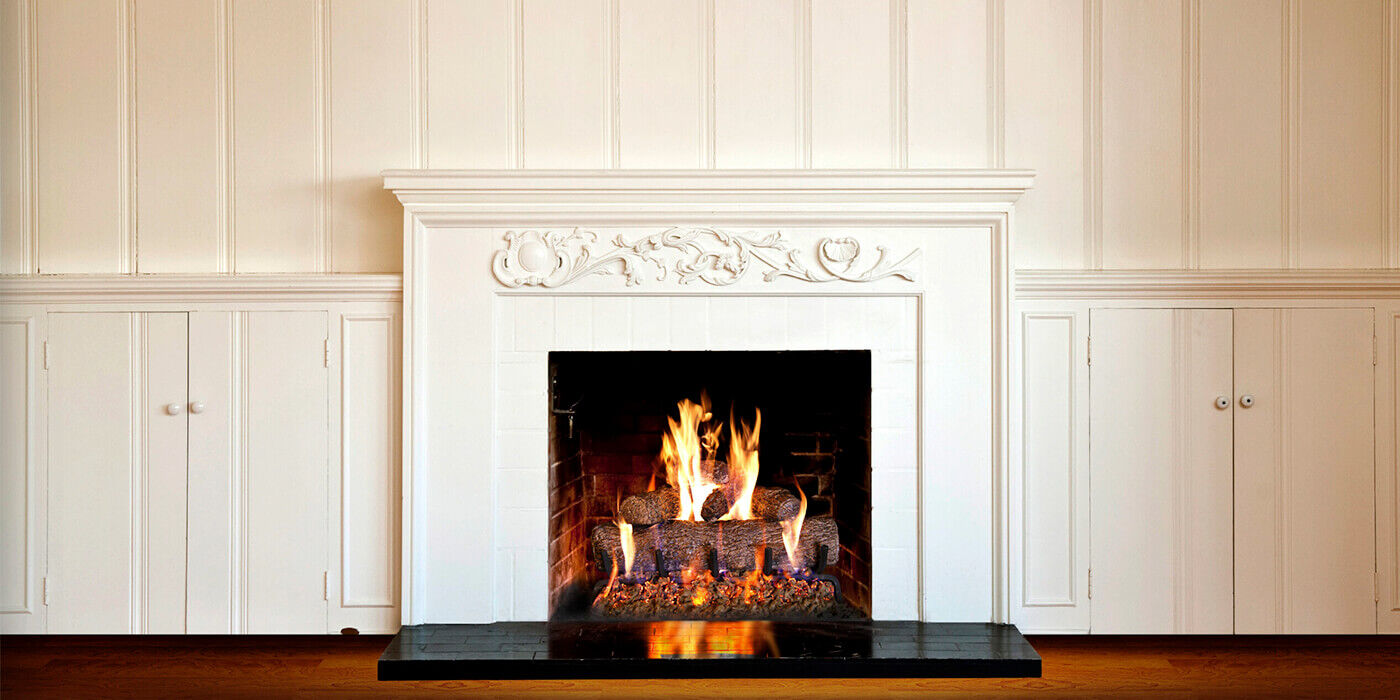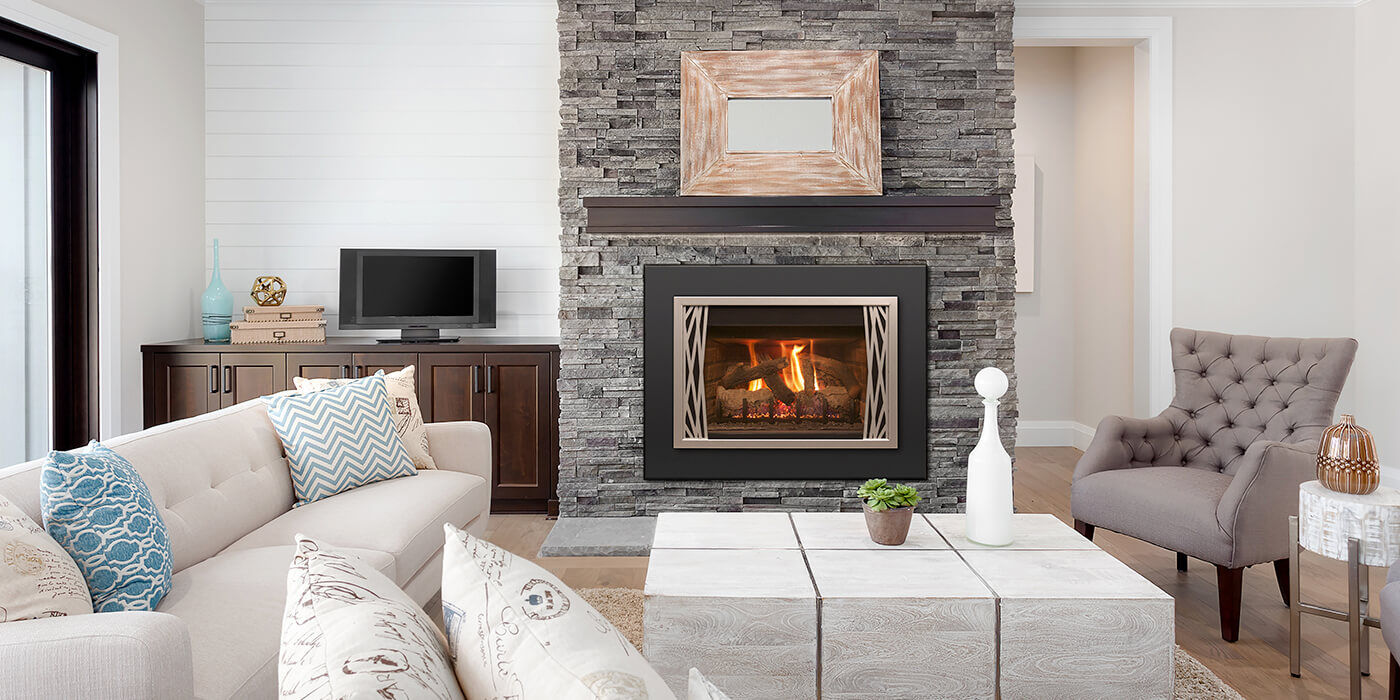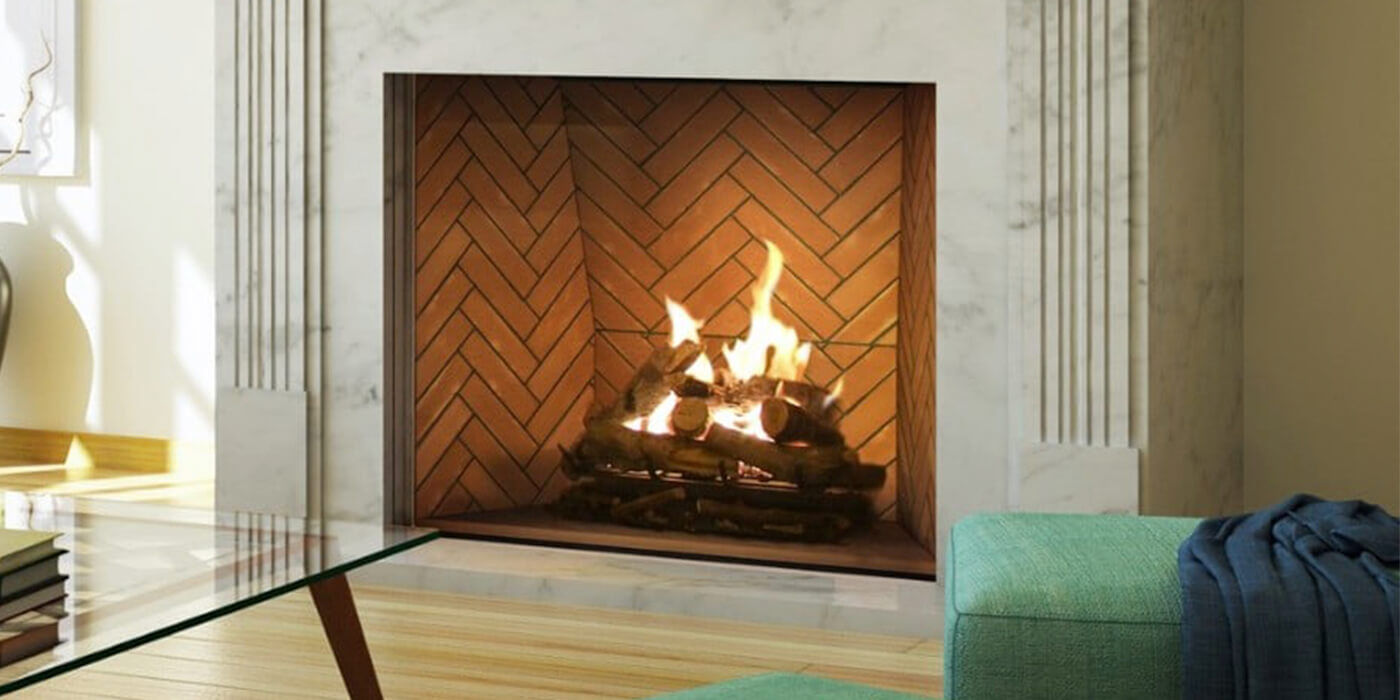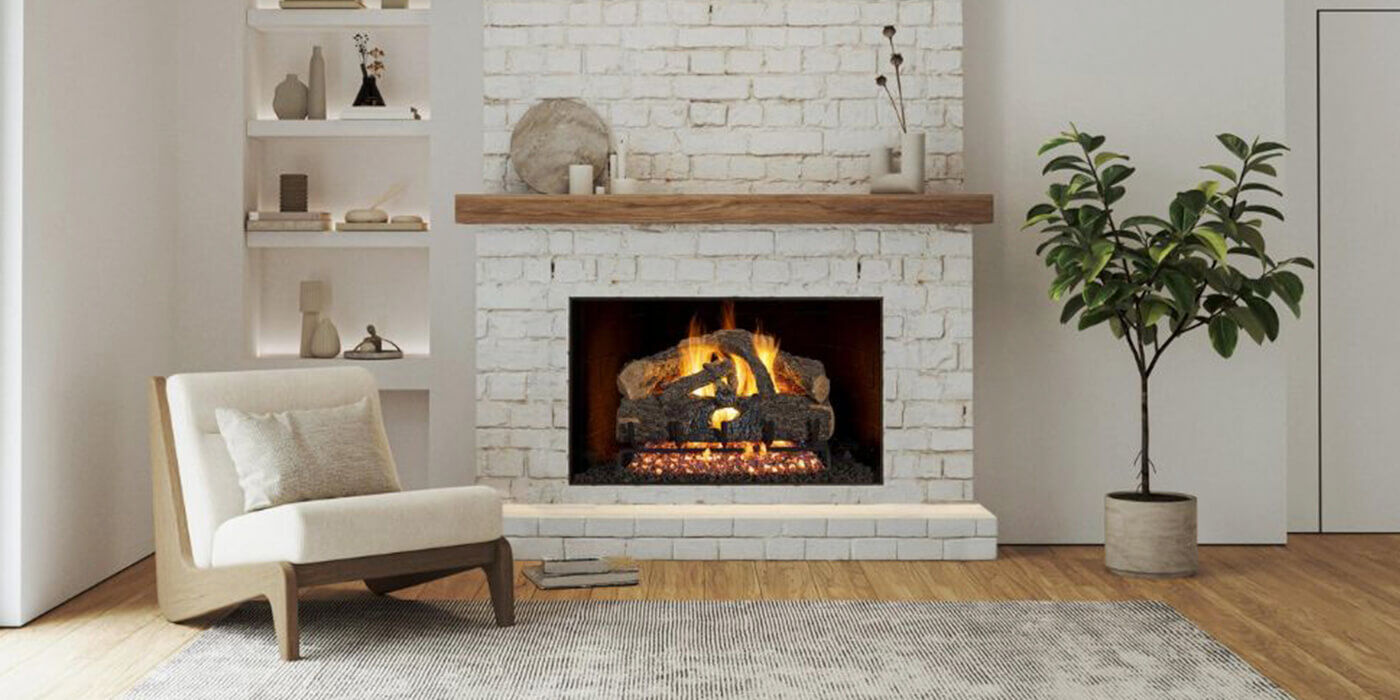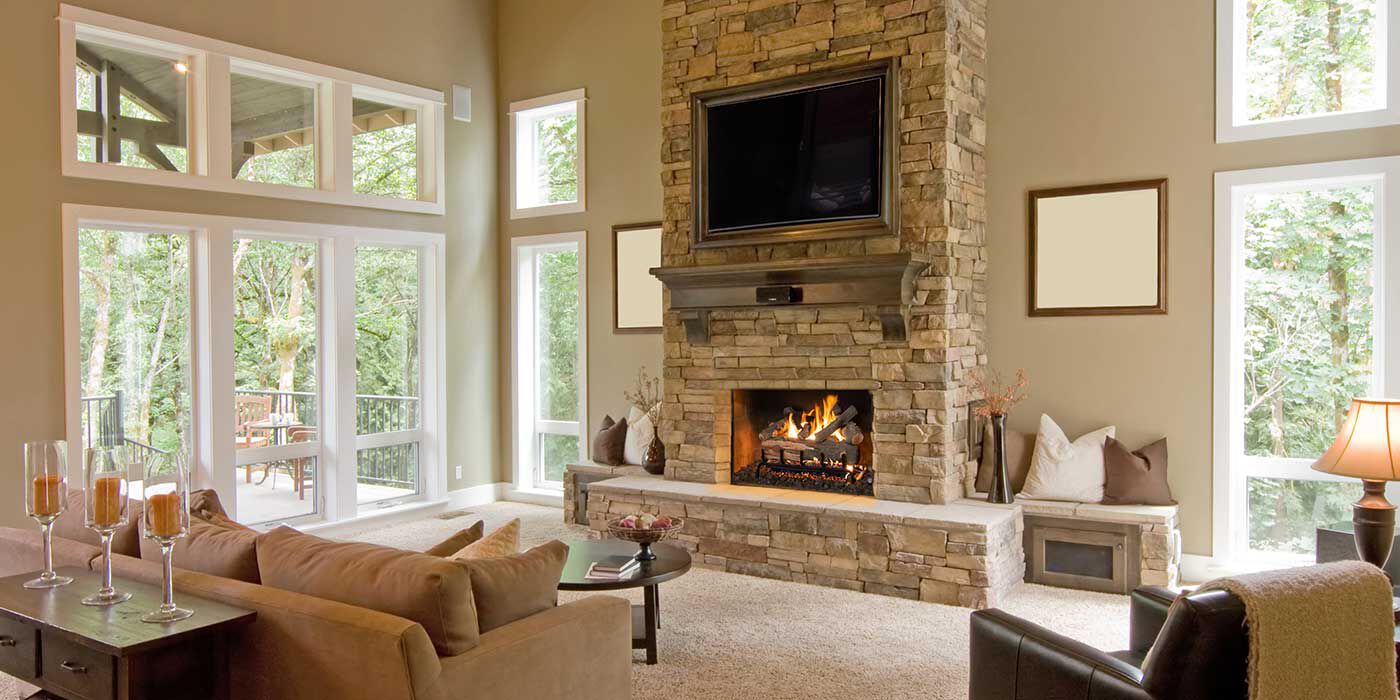By: Tiffany Kurilla, NFI Certified Master Hearth Professional
Last Updated: October 13, 2025
If you love the charm of a traditional wood burning fireplace but want the convenience of gas, Vented gas fireplace logs deliver the best of both worlds. They’re a popular choice for homeowners looking for beautiful, natural-looking flames and timeless ambiance that elevates every occasion.
However, before you select your new Vented log set, it's important to understand how they work. While these systems closely replicate a real wood fire, they require proper venting, usually through a chimney.
This guide will walk you through the advantages and possible drawbacks of Vented logs, so you can make the best decision for your home!
In This Article
- What are Vented Gas Log Sets?
- How Vented Log Sets Work
- The Pros of Vented Logs
- Realistic flames
- Cleaner than wood burning
- Excellent indoor air quality
- Many designs to choose from
- The Cons of Vented Logs
- Lower heating efficiency
- Venting requirements
- Potential drafts
- Higher operating costs
- Tips to Get the Most from Your Vented Logs
- Are Vented Logs Right for You?
- Gas Log FAQs
What Are Vented Gas Log Sets?
Vented gas log sets are designed to fit inside existing fireplaces. They run on natural gas or liquid propane, burning cleanly while creating full-bodied flames that mimic real wood burning fires.
The main drawback with Vented logs is heating efficiency. Just like a wood burning fireplace, you’ll need to comply with local building codes and have a working chimney with a damper to vent out combustion byproducts.
Because the damper needs to stay open, most of the warmth escapes up the chimney. For this reason, customers purchase Vented logs more for ambiance and aesthetics than efficient heat.
How Vented Gas Logs Work
When you ignite a Vented log set, the gas flows through a burner system that’s positioned beneath a set of ceramic or refractory ceramic logs. These logs are strategically arranged to produce the most realistic flame pattern.
Combustion gases are vented through the chimney. The open chimney damper allows these gases to exit, just as they would with a traditional wood fire.
To operate safely, the damper must always remain open while the fire is burning. This ensures proper ventilation and prevents harmful gases from entering your home. While this means less radiant heat remains in the room compared to Ventless gas log sets, the payoff is in appearance and air quality.
The Pros of Vented Gas Logs
Let’s break down all the highlights. These are the main Vented gas log advantages that attract homeowners looking to elevate their fireplace experience.
Exceptionally Realistic Flame Appearance
One of the best Vented log benefits is the flame quality. The unrestricted airflow creates tall, lively flames that look almost indistinguishable from an authentic wood fire.
Since there’s no oxygen restriction— unlike Vent-Free logs, which have built-in oxygen depletion sensors — the fire burns naturally, producing a soft, glowing ember bed and gently rolling golden flames.
Cleaner Than Classic Wood Burning
Vented logs still produce combustion gases, but they burn far cleaner than wood. You’ll enjoy a smoke-free experience, without the ash, soot, or creosote to clean up.
That means:
- Less chimney maintenance
- No need for wood storage or cleanup
- Reduced risk of chimney fires
Safe Venting of Harmful Gases
Vented gas logs prevent the buildup of carbon monoxide and other combustion gases inside your home — it’s all pulled up the chimney flue and expelled outside.
Indoor air quality won’t be affected, which is a huge selling point for most customers.
Variety of Authentic-Looking Designs
You can find Vented options in a wide variety of styles. Some of the most popular log styles include charred oak, birch, and driftwood.
With so many authentic-looking choices, it’s easy to select a log set that matches the vibe of your living space.
The Cons of Vented Gas Logs
While the realism is unmatched, Vented logs do come with a few notable trade-offs. Understanding these can help set expectations before installation.
Lower Heating Efficiency
The biggest drawback with Vented logs is heat loss. Since Vented systems rely on an open chimney, a large portion of the heat escapes outdoors along with the combustion gases.
If your goal is supplemental heating, a Ventless log set or Direct Vent gas fireplace insert is your best option.
Installation and Venting Requirements
Vented gas logs need a fully functional wood burning fireplace to work.
If your chimney is damaged, missing a flue liner and damper, or not up to code, you’ll need to hire a professional for repairs before installing your Vented log set.
Potential Draft Issues
You’ll need to leave the damper open for a Vented log set to work safely, which can cause some cold air to seep into your home.
Close the damper when you’re not using your fireplace to help prevent drafts.
Higher Operating Costs
Vented logs are a more affordable choice than traditional wood burning, because you won’t need to worry about buying and storing firewood. However, Vented options are more expensive to run than Ventless log sets.
Because of the heat loss, Vented logs require more fuel to maintain visible flames levels. This can translate to higher gas usage and slightly elevated utility bills, compared to Ventless options.
However, for most homeowners, this trade-off is well worth it for the incredible flame presentation.
Tips for Getting the Most from Your Vented Gas Log Set
To keep your Vented gas logs looking and functioning well for years to come, consider these maintenance and usage tips:
- Inspect your chimney annually to ensure it’s clear of debris and functions properly. We recommend hiring a professional to inspect and service your chimney.
- Always follow the installation requirements in your gas log owner’s manual, such as correct log placement.
- Keep your fireplace damper open while you’re using your Vented log set to allow safe venting of emissions.
- Schedule professional service every few years to clean the burner that comes with your Vented log set and verify your gas line connections.
- Choose the right log size for your firebox — too large or small can affect flame pattern and safety.
Who Should Choose Vented Gas Logs?
Vented gas logs are an excellent choice if you:
- Want a low-maintenance alternative to wood fires.
- Have a wood burning fireplace with a working chimney.
- Value aesthetics and realism over heat output.
- Appreciate a traditional look that complements your home’s style.
They’re perfect for homeowners who see their fireplace as a focal point for relaxation and ambiance, not necessarily as a primary heat source.
FAQs
Not exactly — the type of fireplace you have matters. Direct Vent and Ventless gas fireplaces work differently and will require a specific type of log set.
For example, Vent-Free gas logs are made for approved Ventless systems, while Vented log sets need to be installed in a fully functional wood burning fireplace with a working chimney.
While both increase fireplace functionality and reduce heating costs, they are two different types of products.
Gas log sets are a set of ceramic logs and a burner system that sits inside your fireplace, while gas fireplace inserts are metal boxes that are “inserted” into the firebox and finished with a decorative surround.
Both gas log sets and gas fireplace inserts offer ease of use and let you transform an existing fireplace.
The size depends on the dimensions of your firebox. Measure the height, width, and depth of your fireplace before shopping.
Choosing the right gas log size is important because it ensures they look as realistic as possible, and the burner system works properly.
Many gas log sets are compatible with both propane gas and natural gas. Be sure to select a set that matches your home's gas line type.
Some logs are designed specifically for one fuel type, so it’s important to check the manufacturer’s specifications before purchasing.
Yes, you can add a remote control to your gas log set after installation if it has a millivolt or electronic control valve.
You can even convert your log set to a remote-control system with variable flame and thermostatic controls.
We’re Here to Help
Do you have more questions about Vented gas logs? We’re happy to help! Reach out to our NFI Certified Master Hearth Professionals at 800.919.1904.
More Resources
Explore the types of gas logs, how they work, and what you can expect for installation in our Gas Log Buying Guide.
Looking for an easy, affordable, and energy efficient alternative to real fires? Consider an electric fireplace!
Learn the key differences between gas log sets and gas fireplace inserts.
 |
Tiffany Kurilla, Technical Sales Representative, has five years of experience at Woodland Direct. As an NFI-Certified Master Hearth Professional, she’s recognized for her deep knowledge of fireplace products and safety standards. Tiffany’s dedication and mastery earned her the title of Woodland’s top sales representative in 2021 and 2022. Outside of work, Tiffany is an avid traveler, exploring national and international destinations. Her favorite spot to visit? The Happiest Place on Earth — Disney World! Call Tiffany or one of our experts in fire at 800.919.1904. |
